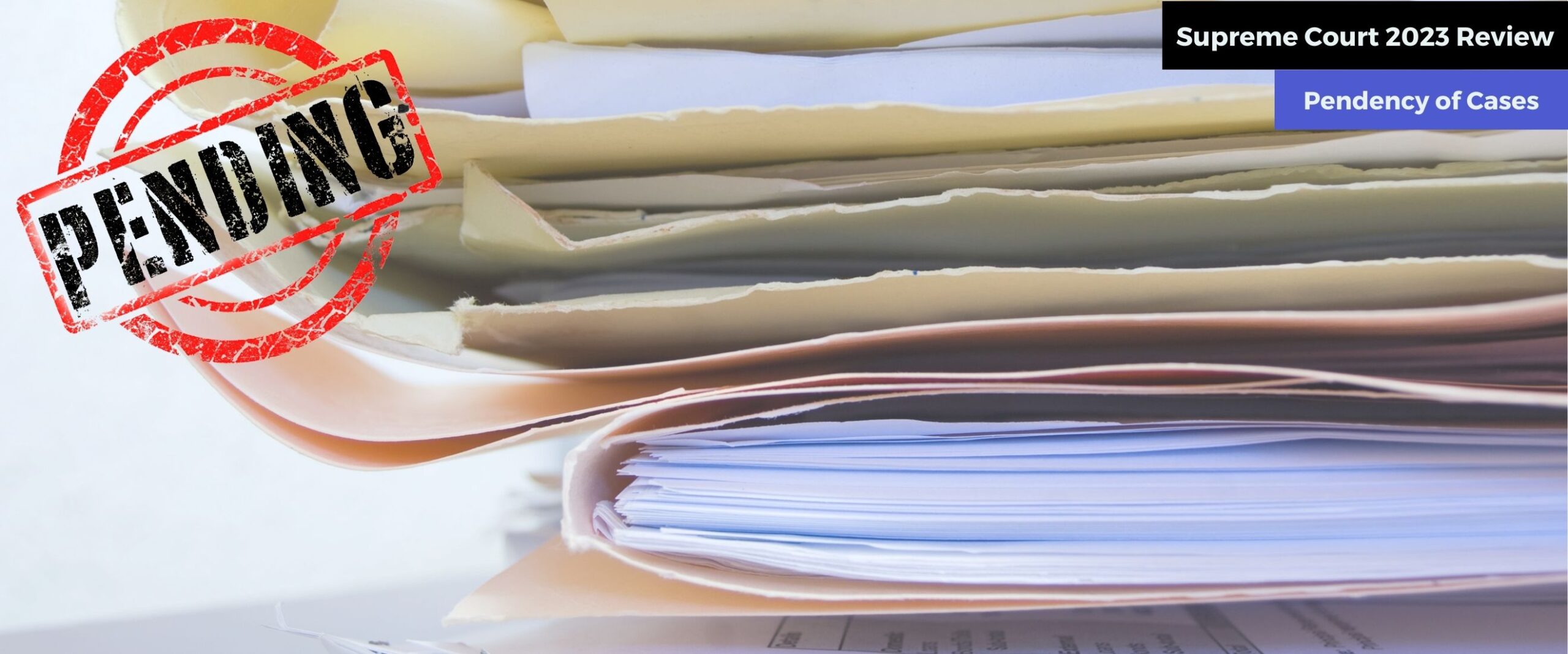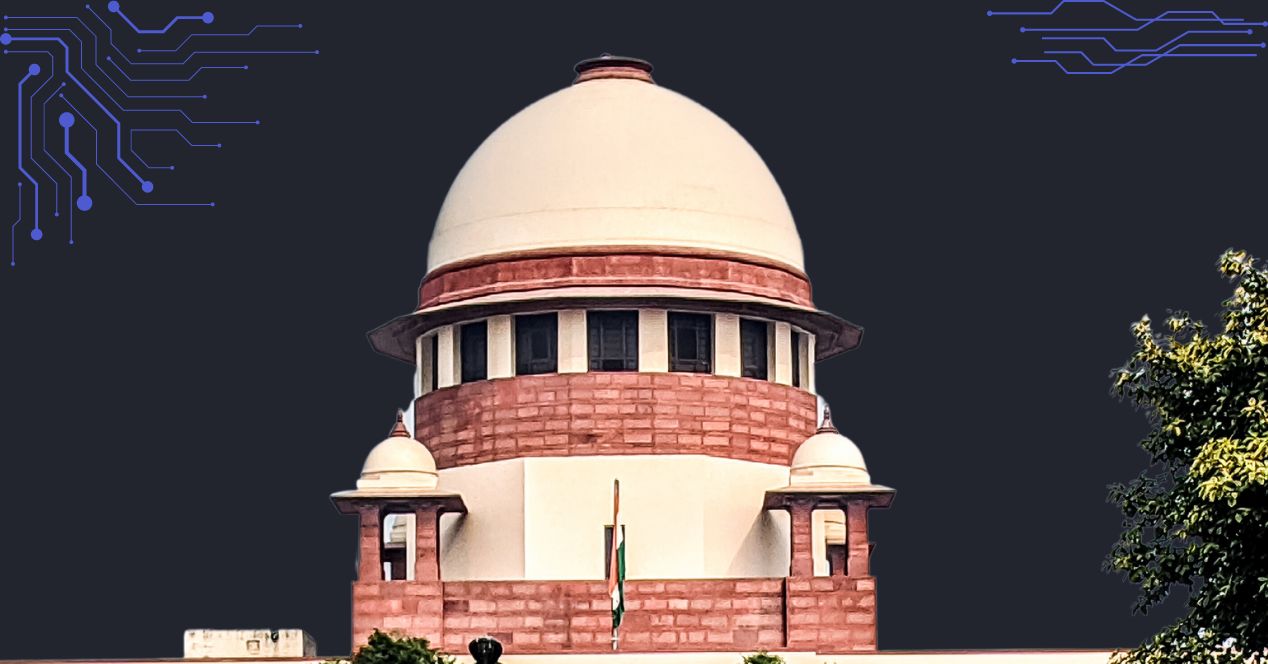Court Data
Supreme Court makes a dent in pendency in 2023 despite closing with 80,439 open cases
The pendency number seems alarming but it needs to be viewed in the context of past figures, improved access and a change in counting method

Pendency numbers in the Supreme Court reached an all time high of 80,439 in 2023. But it was also a year when the Court moved things along at a faster clip than usual, assisted by technological aids. Data from the National Judicial Data Grid (NJDG) suggests that 52,220 cases were disposed of this year—a healthy 31 percent increase from last year. After many years of silence, the top court under the CJI D.Y. Chandrachud heard more than 20 Constitution Bench cases, delivering judgements in at least 18 cases.
So if indeed this was one of the more efficient years of the Court in the recent past, what explains the pendency number?
Change in counting method
The year opened with 78,400 pending cases. The most notable inflection point was in June when the pendency of cases reached the year’s highest at 81,509 cases. This increase was expected as the Court was on summer vacation that month. It soon returned close to the year’s average (of 79,361 cases) in July at 78,781 pending cases. Since then, pendency steadily increased, reaching 80,439 in December.
Figure 1 tracks pendency in each month in 2023. The X-axis plots the months and the number of pending cases is on the Y-axis.
One thing to remember while considering this year’s data is that the counting method adopted by the Supreme Court in its Annual Report has changed. “The data from November 2022 onwards includes all diarised matters which also includes Miscellaneous Applications, Unregistered Matters, Defective matters etc. Hence, change in Institution, Disposal and Pendency figures,” the Report explained. Before November 2022, the numbers for institution, disposal and pendency included only registered cases.
This may not have been the best metric to assess the Court’s complete workload, considering that unregistered, miscellaneous, defective and all other types of cases cumulatively contribute to the congestion. Now, with the inclusion of these kinds of cases, we have a better understanding of the total caseload.
Getting up to speed
In recent years, the Court has made a dedicated effort to improve efficiency. And in this, as the Chief Justice put it, “technology has been a steadfast ally.”
The Court updated its e-filing systems with the E-filing Module (EFM) 2.0, which is meant to ease “electronic filing, defects notification, curing of defects, processing documents for scrutiny.” The Court also launched the E-Sewa Kendra to help aid citizens file and access video conferencing tools. Staff members have also been deputed to provide technical assistance.
To ensure speedy delivery of justice in urgent cases, the Court constituted Special Benches to expedite the disposal of three-judge bench matters. The Court reported that “approximately 166” such sittings were held in 2023.
The impact on disposal rate is apparent. The Court disposed of 52,220 cases this year compared to 39,800 in 2022, 20,670 in 2021 and 24,586 in 2020 (The unusually low numbers in 2020 and 2021 were a result of the pandemic.)
Filing numbers have also caught up just as quickly. From 25,897 and 29,739 cases filed in 2020 and 2021, the number of cases filed in the top court jumped to 36,565 in 2022. This year, 53,846 cases were filed. The increased filing numbers in 2023 are likely a result of the Court’s efforts to improve access.
Pendency at an all-time high, but needs to be viewed in context
Pendency needs to be assessed keeping in mind the caseload inherited by the incumbent CJI. Figure 2 plots pendency over the last 10 years, with the years on the x-axis and the number of cases on the y-axis.
Pendency crossed the 60,000 mark in 2012 and steadily increased until 2015 when it dropped just within the 50,000s range. With 2016 as the exception, this decreasing trend continued until 2019 which closed with 59,859 pending cases. By the next year, as a result of the pandemic, the Court saw unprecedented backlog, systemic failures and a near halt in its functioning.
The pandemic years caused a sharp uptick in pendency, jumping from 59,859 in 2019 to 65086 in 2020 and 70239 in 2021 and 78,797 in 2022. Between each of these years, the increase in cases was more than 5000. In fact, there were 8,558 more pending cases in 2022 than in 2021.
That’s one of the contexts with which we need to look at the 2023 pendency numbers. There are only 1,642 more pending cases in 2023, compared to last year. This paints an encouraging picture when viewed together with the pendency statistics of the last few years, this year’s significant disposal numbers and the changed counting methodology. The Court’s efforts in bringing in systemic changes, hearing Constitution Bench cases, constituting special benches, and other such reforms appear to have borne fruit.
Will the Court be able to sustain this momentum in 2024? While some stability and consistency in implementation can be expected until CJI Chandrachud completes his tenure in November 2024, it will fall upon the next Chief Justices of India to keep up the pace.




